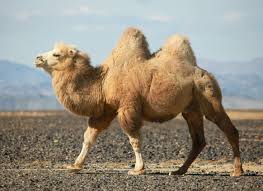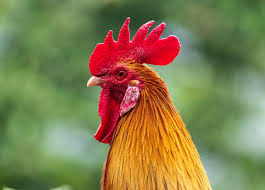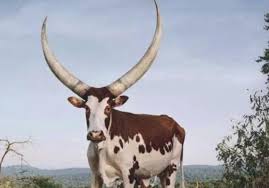Diclazuril (Suspension)
Brand Name:
Diclazuril (Suspension)
Indications & Uses:
Parasites
Dosage Forms:
Liquid Solution
Name:
Diclazuril (Suspension)
Common Capacity:
500ml; 1000ml per bottle [1]
Applicable Animals:
Global Livestock Application:
- Poultry: Chickens (Broilers, Layers, Breeders), Turkeys, Ducks, Geese, Quails, Pheasants
- Swine: Piglets, Weaner Pigs, Growing-Finishing Pigs
- Ruminants: Calves, Lambs, Goat Kids
- Rabbits
Dosage and Administration:
Administer orally, primarily via drinking water, ensuring uniform distribution. Shake well before use.
- Poultry (Chickens, Turkeys, Ducks, Geese, Quails, Pheasants):
- Prophylactic/Treatment: The dosage typically aims to provide Diclazuril at a concentration of 0.5 mg/L to 1 mg/L in drinking water for 48 hours, or 1 ppm for continuous administration during the risk period. For specific control of Eimeria species, common dosages include 1 ppm for 2 days or 0.5 ppm for 7 days.
- Example for 1 ppm (1 mg/L): If using a 0.5% Diclazuril suspension, add 20 mL of suspension per 100 liters of drinking water. Dosage should be based on the local epidemiological situation and the specific Eimeria species present.
- Piglets:
- Diclazuril is effective against Isospora suis.
- Prophylactic/Treatment: A common dosage for piglets is a single oral dose of 1 mg diclazuril per kg body weight, given at 3-5 days of age. For a 0.5% suspension, this translates to approximately 0.2 mL per kg body weight.
- Calves, Lambs, Goat Kids:
- Effective against Eimeria species in ruminants.
- Prophylactic/Treatment: A single oral dose of 1 mg diclazuril per kg body weight is typically recommended. Administer to calves at 14-17 days of age and to lambs/goat kids at 10-15 days of age, or around weaning/stress periods.
- Rabbits:
- Used for the prevention and treatment of coccidiosis caused by Eimeria species.
- Prophylactic/Treatment: 1 mg diclazuril per kg body weight orally, once daily for 2 consecutive days, or as a continuous low dose in water/feed during high-risk periods.
Due to the varying concentrations available (0.5%; 1%; 2.5%) [1], precise calculation based on the product’s specific concentration is necessary for accurate dosing.
Applicable Diseases and Symptoms:
- Coccidiosis: Caused by various Eimeria species across different hosts. Diclazuril targets these protozoan parasites, inhibiting their development.
- Symptoms: Prevention and treatment of clinical coccidiosis characterized by diarrhea (which can range from watery to hemorrhagic), reduced growth rate, decreased feed conversion, poor performance, dehydration, emaciation, and increased mortality, especially in young animals.
Precautions:
- Shake the suspension well before each use to ensure the active ingredient is uniformly dispersed.
- Accurate assessment of animal body weight is crucial for correct dosing.
- When administered via drinking water, ensure thorough mixing and constant stirring if possible, as suspensions can settle. Medicated water should be consumed within 24 hours. Prepare fresh solution daily.
- Do not exceed the recommended dose. Overdosing can lead to adverse effects.
- Use as part of an integrated coccidiosis control program, which includes good management practices, hygiene, and biosecurity measures.
- Continuous long-term use of diclazuril as the sole anticoccidial may lead to the development of resistance. Consider rotating with other classes of anticoccidials.
- Strict adherence to withdrawal periods for meat must be followed to avoid residues in products for human consumption. Observe specific withdrawal periods as stated on the product label.
- Avoid contact with skin and eyes. Wear protective gloves and eyewear during handling.
Contraindications:
- Do not use in animals with known hypersensitivity to diclazuril.
- Not intended for use in laying hens producing eggs for human consumption.
- Not intended for use in animals producing milk for human consumption.
- Avoid use in animals with severe liver or kidney dysfunction.
Post-Treatment Care:
- Maintain rigorous biosecurity and hygiene protocols in poultry houses and animal pens to reduce the environmental challenge of coccidial oocysts. Regular cleaning and disinfection are essential.
- Monitor animals for signs of re-infection or secondary bacterial infections, especially if the initial coccidiosis was severe.
- Ensure adequate access to clean drinking water and a balanced diet to support recovery and promote growth.
- Consider fecal oocyst counts before and after treatment to assess the effectiveness of the medication and the overall control program.
- Evaluate and adjust management practices (e.g., litter management, stocking density, ventilation) to minimize predisposing factors for coccidiosis outbreaks.
Applicable Animals
Animal species suitable for this veterinary medication


